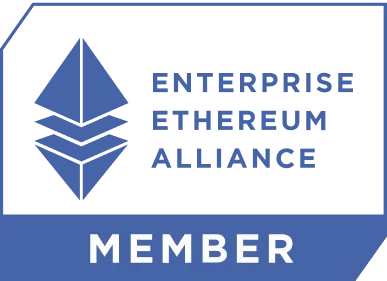What Resources Do You Need to Launch a DEX in 2025?

Why Building a DEX Is More Than Just Code
Decentralized exchange development is not only about writing smart contracts and designing a sleek user interface. There are many unexpected challenges to be faced, and the process is far more intricate than it may seem.
Sure, the tech is the backbone, but if you’re only focusing on the technical side, you’re missing the bigger picture. What’s the point of having the most advanced blockchain solution if no one uses it?
When you launch a DEX, you’re not just building a platform – you’re creating an ecosystem. And ecosystems need more than just smart contracts and fancy interfaces. They need liquidity, security, compliance, marketing, and a solid strategy to stand out in the crowded DeFi space.
In this article, we’ll break down everything you need to know about resources needed for decentralized exchange development, both the obvious and the overlooked. By the end of the guide, you will have a clear strategy for creating a successful exchange.
Development & Security Costs
Smart Contract Development & Testing
At the heart of every decentralized exchange development process is smart contract development. Smart contracts automate trades, manage liquidity pools, and execute transactions without intermediaries.
💡 Always allocate a significant portion of your budget for rigorous testing.
When you launch a DEX, your smart contracts need to be bulletproof. This means:
- Writing clean, efficient code.
- Testing in multiple environments.
- Conducting third-party security audits before going live.
Smart contract development and security audits alone can cost anywhere from $50,000 to $200,000, depending on complexity, blockchain choice, and security requirements. The more complex your decentralized exchange development, the higher the cost.
Frontend & Backend Infrastructure
Now, let’s talk about the face and brain of your DEX.
Frontend Development: The frontend is the face of your decentralized exchange – the part users see, touch, and interact with. It’s where sleek design meets functionality, turning complex blockchain operations into simple, intuitive actions. Think of it as the bridge between your users and the decentralized world.A well-designed frontend focuses on:
- UX/UI Design: Clean, intuitive interfaces that make trading, staking, and providing liquidity a breeze.
- Crypto Wallet Integration: Seamless connections with popular wallets like MetaMask, WalletConnect, and Phantom.
- Smooth User Flows: Effortless navigation, from swapping tokens to tracking transaction statuses.
Backend Development: While the frontend welcomes users, the backend ensures decentralized exchange development runs smoothly. Without a robust backend real-time analytics will fail, and trades won’t execute properly.The backend is responsible for:
- API Integrations: Connecting your DEX to blockchain networks, price oracles, and other DeFi protocols.
- Database Management: Storing and retrieving data efficiently, from user transactions to liquidity pool details.
- Real-Time Analytics: Displaying key metrics like trading volume, total value locked (TVL), and annual percentage rate (APR).
💡 A well-optimized backend can provide users with real-time insights, helping them make smarter trading decisions. Transparency builds trust, and trust builds loyalty.
Building the frontend and backend for a DEX isn’t cheap. Costs can range from $50,000 to $500,000, depending on the complexity of the platform, the blockchain it operates on, and any extra features for DEX development like advanced analytics, API integrations, or cross-chain compatibility.
And here’s the big variable: will you build in-house or outsource? Decentralized exchange development costs heavily depend on this decision. But we’ll dive deeper into that a bit later.
Security Audits & Bug Bounty Programs
Even the best-written smart contracts can have vulnerabilities. Decentralized exchange development requires at least one thorough audit from a reputable firm.
A good audit will:
- Identify potential vulnerabilities in your smart contracts.
- Suggest improvements to your codebase.
- Give your users peace of mind.
But don’t stop there. Consider running a bug bounty program to crowdsource security testing.
Third-party audits typically cost $20,000–$50,000, and bug bounty programs cost around $10,000–$30,000 for incentivizing white-hat hackers to find vulnerabilities.
💡 Projects that skimp on audits often get exploited within months. Don’t be that project.
Liquidity & Market Making
Why Liquidity Is a Critical Investment
When you launch a DEX, liquidity is the fuel that powers trading. Without enough liquidity, your decentralized exchange development will struggle with slippage, high spreads, and an overall poor user experience. Traders won’t stick around if they can’t execute their orders smoothly, and if liquidity is thin, arbitrage bots will pick it apart before you even get a chance to scale.
💡 Think of liquidity like water in a swimming pool. If the pool is only half-filled, it’s harder to swim. A DEX with high liquidity ensures seamless trades, tight spreads, and a competitive edge in the crypto market.
Strategies for Bootstrapping Liquidity
Bootstrapping liquidity is one of the biggest challenges in decentralized exchange development. Without enough liquidity, traders face high slippage, poor price execution, and low confidence in your platform. So, how do you ensure your DEX launches with sufficient liquidity? Here are some effective strategies:
1. Incentivizing Liquidity Providers: One of the most common strategies in decentralized exchange development is attracting external liquidity providers (LPs) by offering yield farming or staking rewards. By distributing governance tokens or fee-sharing incentives, you can create an ecosystem where LPs are motivated to provide liquidity.
💡 For example, platforms like SushiSwap and PancakeSwap grew rapidly by rewarding early LPs with governance tokens, effectively turning their users into stakeholders.
2. Tokenomics Allocation: Set aside a portion of your native token supply to add liquidity to your pools. This helps stabilize trading pairs, reduces volatility, and encourages early adoption.
3. Institutional & Private Investors: Attract liquidity from venture funds, market makers, and private investors. Offer incentives such as fee discounts, staking rewards, or governance privileges to make participation attractive.
4. Ecosystem Collaborations: Engage with blockchain projects and DeFi protocols to encourage them to provide liquidity in their native token pools. Mechanisms like ve(3,3) offer long-term incentives, increasing liquidity retention.
Market Maker Partnerships & Costs
Partnering with professional market makers is often essential. They ensure that buy and sell orders are consistently available, reducing price volatility and improving user experience. However, market makers aren’t cheap. When you launch a DEX, you’ll need to budget for:
- Initial Setup Fees: Market makers often charge a fee to set up their operations on your platform.
- Ongoing Costs: This can include a percentage of trading fees or other performance-based incentives.
💰 Expect to spend $20K–$50K per month on professional market-making services, with some firms demanding profit-sharing agreements in exchange for deeper liquidity.
Liquidity Costs
Now, let’s talk numbers. How much liquidity do you actually need to launch a DEX? The answer depends on several factors:
- Type of a DEX:
AMM-Based (like Uniswap): AMM DEXs rely on liquidity pools, so you’ll need to seed each pool with assets.
Order Book-Based: Order book DEXs require market makers to provide liquidity, which can be more cost-intensive upfront.
- Number of Trading Pairs: Having more pairs means you'll need more liquidity. Start with a few pairs that are in high demand and gradually add more over time.
- Target Liquidity Depth: Deeper liquidity reduces slippage and attracts more traders. But it also requires more capital.
Here’s a rough estimate:
- Bare Minimum: $100K–$500K for a small-scale launch with a few trading pairs.
- Competitive Launch: $1M+ to ensure deep liquidity and competitive trading conditions.
Alternative Approaches: Incentivized liquidity programs, partnerships with liquidity aggregators, and external liquidity providers can reduce the upfront capital requirements.
🚀 Remember, liquidity is what makes any DEX. If you compromise on it, even the best decentralized exchange development strategy won’t save you.
Operational & Maintenance Expenses
Decentralized exchange development isn’t just about the launch – it’s about keeping it running smoothly all the time. The best DEX is one that doesn’t crash during peak trading hours, frustrate users with slow transactions, or get hacked due to weak infrastructure.
Hosting & Infrastructure Costs
A DEX needs robust hosting power to process trades in real time. Unlike centralized exchanges, a DEX must rely on distributed networks, node operators, and blockchain scalability solutions.
- Cloud hosting: AWS, Google Cloud, or dedicated blockchain infrastructure – expect to spend $100–$1500/month.
- Blockchain nodes: Running validator or archive nodes on networks like Ethereum or BNB adds $1K–$10K annually.
- Load balancing & redundancy: Avoid downtime by deploying fail-safe mechanisms ($5K+/month).
Developer & Support Team Salaries
One of the main things that affects the cost of decentralized exchange development is the team you've got working on it. Should you build an in-house team or outsource to a specialized DEX development company? Let's compare both options:
Option 1: Building an In-House TeamCosts: High upfront costs, long-term investment
Pros:
- Full control over the project and tech stack
- Dedicated team with deep product knowledge
- Faster iterations and updates
Cons:
- Hiring blockchain developers is expensive ($100K–$250K per developer annually)
- Requires additional costs for office space, benefits, and HR
- Slower initial development time due to hiring and onboarding
If you’re planning long-term product expansion and have a big budget, an in-house team might be worth the investment.
Option 2: Outsourcing DEX Development
Costs: Lower upfront costs, scalable pricing
Pros:
- Access to top-tier blockchain expertise without hiring full-time staff
- Faster DEX development time as experienced teams work on proven frameworks
- No need to handle HR, salaries, or infrastructure
Cons:
- Less direct control over the decentralized exchange development process
- Potential communication barriers if working with offshore teams
For startups or businesses wanting to launch a DEX quickly and cost-effectively, outsourcing can be a great solution. You get expert help while keeping costs flexible.
Ongoing Operational Costs
Launching a DEX is just the start – keeping it running requires continuous investment:
- Customer support: Users need help 24/7. A responsive support system is key to retaining users.
- Analytics tools: Analytics tools help you monitor user behavior, trading volume, liquidity depth, and other key metrics. These insights are crucial for making data-driven decisions and improving your platform.
- Software licenses: If you choose building in-house, your development and support teams need access to software like code editors, project management tools, and communication platforms.
Subscriptions usually cost between $50 and $200 a month, depending on how much you use them and the size of your decentralized exchange development project. For example, a high-traffic DEX will need more robust infrastructure, which will drive up costs.
Marketing & User Acquisition Costs
So, you’ve nailed the decentralized exchange development process and are ready to launch a DEX – but what’s next? Even the most advanced DEX won’t survive without users, and attracting traders and liquidity providers isn’t as simple as flipping a switch. Marketing is not just an expense, it’s an investment that determines whether your DEX thrives or fades into obscurity. Let’s break down the costs and strategies that go into making your DEX the go-to platform for traders.
Organic Growth: The Long Game That Pays Off
If you’re aiming for a sustainable, community-driven approach, organic marketing is your best friend. While this strategy takes time, it builds a loyal user base that actively promotes your platform. Here’s how to make it work:
Community Building – Your DEX community is your strongest marketing asset. Platforms like Twitter (X), Discord, Telegram, and Reddit are essential hubs where traders discuss strategies, share updates, and report issues.
- Estimated Cost: $5K–$20K for community managers and engagement campaigns.
Content Marketing – High-quality blog posts, explainer videos, AMAs (Ask Me Anything sessions), and educational resources help establish your credibility.
- Estimated Cost: Usually starts from $3,000 for hiring top-tier writers, video creators, and blockchain experts.
- 💡: Make your content SEO-friendly and include key topics like decentralized exchange and swap token to rank higher in search results.
Paid Growth: The Fast-Track to Visibility
If you want to launch a DEX and gain immediate traction, paid marketing can accelerate growth. However, it requires careful execution to avoid burning through your budget without results.
Banner Ads on Major Crypto Platforms – Getting featured on CoinGecko, CoinMarketCap, and top crypto news sites can bring instant credibility and exposure.
- Estimated Cost: From $2K–$3K/month.
- 💡: Test different creatives to find the most engaging ad format before scaling your campaign.
Partnerships & Co-Marketing – Collaborating with blockchain projects, DeFi protocols, or or even other DEXs can amplify your reach. Co-marketing campaigns, joint events, and shared incentives can attract users from both ecosystems.
- Estimated Cost: From free to $10K+ depending on the campaign’s scope and partner involvement.
- 💡: Some projects are happy to co-market for free if there’s a strategic benefit. Others might require a budget, especially for larger campaigns.
Influencer Marketing & Referral Programs
Marketing in Web3 is unique – traditional ads may not work as well, and word-of-mouth is king. Influencer marketing and referral programs are among the most effective ways to bring users and liquidity to your DEX.
Influencer Marketing – Crypto YouTubers, Twitter (X), KOLs (Key Opinion Leaders), and blockchain analysts can drive massive traffic to your DEX.
- Estimated Cost: $20K–$50K+ (depending on the influencer’s reach).
- ⚠️: Choose influencers with real engagement, not just high follower counts, to avoid wasted budget on bot-driven traffic.
💡 It is possible to reduce the cost by negotiating token payments or offering tokens at a discount. Many influencers are open to long-term incentives, such as revenue-sharing models or referral programs, which can make collaborations more cost-effective.
Referral Programs & Airdrop Campaigns – Nothing excites crypto users more than free tokens. Running a well-structured airdrop or referral campaign can attract early adopters and incentivize trading activity.
- Estimated Cost: $10K–$50K, depending on the reward pool size and campaign reach.
- 💡: Use vesting schedules for airdrops to prevent dump-and-run behavior.
Total Marketing Budget Estimates: What Should You Expect?
Lean Launch (Bootstrap Approach) – If you're tight on funds but still want solid traction, focus on organic marketing and small community incentives.
- Estimated Cost: $50K–$100K.
- Best For: Niche DEXs with a specific target audience.
Mid-Level Launch (Balanced Strategy) – Combining organic and paid marketing with strategic influencer campaigns can push your DEX into the spotlight.
- Estimated Cost: $200K–$500K.
- Best For: DEXs aiming for mid-sized market penetration.
Aggressive Growth (Competing with Top DEXs) – If you want to challenge Uniswap, PancakeSwap, or dYdX, you’ll need a high-powered marketing machine.
- Estimated Cost: $1M+.
- Best For: Teams with deep pockets looking for fast and massive user acquisition.
In decentralized exchange development, marketing isn’t a luxury – it’s a necessity. You can build the most secure and feature-rich DEX, but if no one knows about it, liquidity dries up, and the platform stagnates. The key takeaway? Plan your marketing strategy alongside your decentralized exchange development roadmap. Whether you choose organic growth, paid ads, or a mix of both, make sure your launch a DEX strategy aligns with your long-term vision.
Strategic Partnerships & Integrations
Without great integrations your DEX can struggle with scalability, liquidity, and user adoption. To help you build strong partnerships, you'll probably need a business developer. This person should be someone who attends events with a lot of energy, knows everyone in the industry and gets real results in the form of long-term collaborations.So, who should you be partnering with?
Partnering with Other DeFi Protocols
A DEX doesn’t exist in isolation – it thrives within the larger DeFi ecosystem. Lending & borrowing protocols, yield aggregators, and stablecoin projects can all supercharge your platform.Key partnerships to consider:
- Lending Protocols (Aave, Compound) – Allows traders to borrow against holdings, increasing capital efficiency.
- Yield Aggregators (Yearn Finance, Beefy Finance) – Gives users more earning opportunities without leaving your platform.
- Stablecoin Issuers (DAI, USDC, USDT) – Collaborate with stablecoin projects to provide stable trading pairs and reduce volatility risks.
- Swap & Liquidity Aggregators – Partner with DEX aggregators like 1inch and Paraswap. Being listed on such platforms increases visibility and drives more volume to your platform.
Blockchain & Layer 2 Partnerships for Scalability
Ethereum congestion and high gas fees are common problems. If you want to launch a DEX that remains fast and affordable, you need to integrate with Layer 2 solutions or alternative blockchains.Top scalability solutions include:
- Optimistic Rollups (Arbitrum, Optimism) – Lower fees while staying within Ethereum’s security framework.
- ZK-Rollups (StarkNet, zkSync) – Lightning-fast transactions with enhanced privacy features.
- Alternative Chains (BNB Chain, Solana, Avalanche, Polygon) – Lower-cost alternatives with thriving DeFi ecosystems.
💡 Establishing partnerships with prominent blockchains can open doors to valuable opportunities, such as blockchain grant opportunities. Many blockchains actively support promising DEX projects with funding, exposure, and introductions to other projects in their ecosystem.
Exchange Listings & Token Bridges
If your DEX has a native token, it needs exposure. Getting listed on other major exchanges – both centralized and decentralized – boosts visibility, liquidity, and credibility.Strategies for token expansion:
- CEX Listings (Binance, Coinbase, Kraken, KuCoin) – Provides access to mainstream retail traders.
- DEX Listings (Uniswap, SushiSwap, PancakeSwap, Curve) – Ensures DeFi-native exposure and arbitrage opportunities.
- Cross-Chain Bridges (Wormhole, Anyswap, Synapse Protocol) – Allows users to move assets seamlessly across chains, increasing liquidity.
Cross-Marketing & Co-Branding Opportunities
Strong partnerships aren’t just technical – they’re also about marketing. Strategic collaborations with other DeFi projects, crypto influencers, and Web3 communities can drive massive user adoption.Marketing partnerships can include:
- Co-branded trading competitions – Running an event with another DeFi project boosts engagement for both platforms.
- Joint AMAs & Webinars – Educating the community about why your decentralized exchange stands out.
💡 Think beyond DeFi projects. Consider collaborations with gaming projects, NFT platforms, and even fintech startups to expand your reach.
Regulatory & Legal Considerations
Another absolutely crucial aspect to address before launching a DEX is compliance. Failure to consider legal aspects of decentralised exchange development can lead to severe consequences, including regulatory challenges.
Legal Services & Consultancy: Why You Can’t Skip It
In decentralized exchange development, compliance is not optional – it's survival. Different jurisdictions have different rules regarding crypto trading, token issuance, and financial regulations. If your DEX operates without legal clarity, you risk fines, shutdowns, or even legal action.
💡 Look for legal firms with experience in DeFi. A good legal consultant can help you navigate licensing, user agreements, and regulatory loopholes.
KYC/AML Compliance vs. Permissionless Trading
Here’s the paradox: crypto users love anonymity, but regulators don’t. Know Your Customer (KYC) and Anti-Money Laundering (AML) requirements ensure that your platform isn’t a playground for illicit activities. However, strict KYC can deter privacy-focused traders. So, what’s the move?
- Regulated approach: Implement KYC/AML measures to comply with local regulations, especially if you're targeting institutional investors.
- Hybrid model: Allow non-KYC trading for small transactions but enforce verification for larger trades.
- Fully permissionless: No KYC, just pure decentralized trading – but this comes with significant regulatory risks.
💡 If you opt for KYC, integrate decentralized identity (DID) solutions to streamline verification without compromising privacy.
Legal Fees & Ongoing Compliance Costs
To launch a DEX legally, you need ongoing compliance monitoring. Costs include:
- Initial legal consultation ($10K–$50K depending on jurisdiction)
- Licensing fees (if applicable, $50K–$200K+)
- Ongoing compliance monitoring ($5K–$20K per year)
💡 Consider jurisdictions like Switzerland or Dubai, which offer more crypto-friendly regulations.
Final Considerations & What Founders Need to Be Prepared For
After all is said and done, what does it truly cost to launch a DEX? It’s not just about the initial build – it’s about the long-term vision. The best decentralized exchange development strategies take into account every factor: technology, security, liquidity, marketing, compliance, and innovation.
Final Takeaways for Founders
1️⃣ Development matters, but it’s just the start. Smart contracts and UI won’t guarantee users without liquidity and marketing.
2️⃣ Liquidity is king. A DEX without liquidity is just an empty shell – secure it through multiple strategies.
3️⃣ Marketing is a real cost – budget for it. A great platform means nothing if no one knows about it.
4️⃣ Web3 thrives on partnerships. Influencers, affiliates, and ecosystem collaborations drive growth.
5️⃣ Legal compliance isn’t optional. Navigating regulations from the start will protect your DEX from legal risks.
Remember: Decentralized exchange development isn’t just about launching a product – it’s about sustaining and evolving a platform that will attract users, liquidity, and long-term success.
🚀 Ready to launch a DEX? Make sure your strategy accounts for every hidden cost, and don’t hesitate to partner with DEX development experts who’ve done it before!
We ❤️ Development
Follow us on social media to receive the hottest blockchain development updates




%20MetaDEXes%20work%20thumbnail.webp)







%201.webp)



